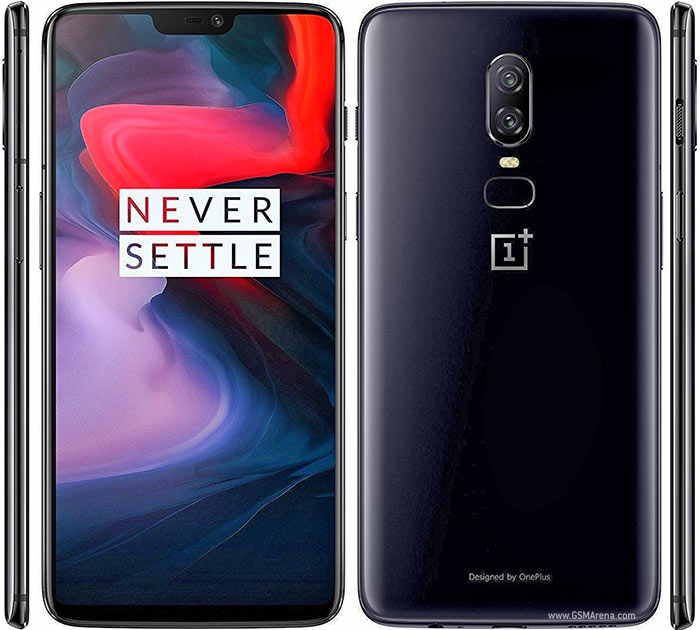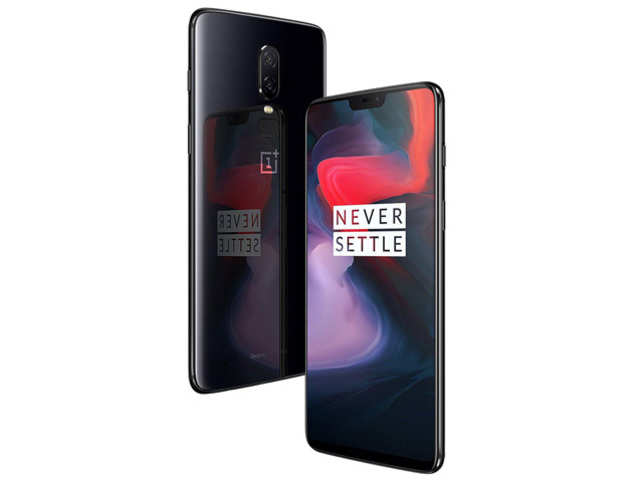ONEPLUS 6 specifications,Review
Much of what makes the OnePlus 6 feel extra special is the completely new build and design. It’s now made almost completely of glass, which curves around the rear and feels fantastic. There’s a rim of metal sandwiched between the glass to add some rigidity.
There’s a highly polished black version that’s gorgeous but a real fingerprint magnet, plus there’s a more conservative Midnight Black matte-finished model, and a stunning white-and-pinky-gold variation that sadly won’t arrive until after launch. OnePlus told me the latter version was made with powdered pearl dust, and while that sounds like the beginnings of a mythical witch’s brew, it does give the phone a jewel-like finish.
There’s been a switch-up in other classic OnePlus design aspects, too. The alert slide is still present, but it sits on the opposite side, and the fingerprint sensor is now an oblong shape, perched beneath the centrally positioned dual cameras. The alert slider lets you easily jump from silent to loud mode without unlocking the phone, and I miss it a lot when using a phone that isn’t from OnePlus. I’d love to see more phones have one.
Despite being heavily rumoured in the run-up to launch, the OnePlus 6 doesn’t hold an IP-rating for water-resistance. However, the company has said that while the device holds no official rating, much work has been done to improve its protection against water. These come by way of extra seals around the ports and between the screen.
I’m still slightly confused, though, by the lack of an official IP rating. Maybe the company is trying to save some cash by not officially garnering an IP rating; similar to the way it previously lacked the necessary codecs to play HD content from Netflix and Amazon.
The bottom line is that, despite the lack of IP rating, OnePlus appears confident that if you leave your phone in the bathroom while you’re having a shower or the device is caught out in the rain, it will be fine.
On the bottom of the phone you’ll find a 3.5mm headphone jack – always nice to see and getting rarer by every phone launch – alongside the USB-C port for charging.
OnePlus 6 – Screen
The launch of the 5T in late 2017 appeared to be OnePlus’ quick response to the trend of the time, which was reducing the bezel and stretching out the display. With the OnePlus 6, the company jumps on another trend: the screen ‘notch’.The small cut-out at the top of the 6.3-inch display is fine, but I still can’t really understand the reason it’s here. There isn’t anything special going on inside the notch – just a regular 16-megapixel sensor, speaker and LED – and it simply feels like a device trying to imitate the iPhone X. It’s likely that most flagship phones in 2018 will sport a notch, but I still don’t really know why.
At least the notch doesn’t really interrupt anything when you’re using the phone. Apps either blank it out completely or comfortably deal with it by altering the UI, while further support and tweaks will come in Android P.
Videos don’t cover the notch when they’re playing
the display itself is excellent, and if you really despise the notch then there’s a software update that will enable you to cover it up. The 2280 x 1080 (FHD+) OLED panel is bright, sharp and very colourful, with great viewing angles. It doesn’t seem to suffer that much with the usual shift to yellow tint that’s ruined many OLED displays over the past year either.
It would have been nice to see OnePlus increase the overall resolution of the screen to quad-HD, considering every OnePlus phone to date has packed a 1080p resolution. The issue with this again comes down to price, and of course whether the trade-off in battery life is worth that extra resolution.
If you’re not satisfied with the default colours on the display, the OnePlus 6 also enables you to tweak endlessly. The default setting out of the box is a little white and saturated for my liking, while the Adaptive mode toggles between various settings depending on what you’re doing. My pick is the DCI-P3 mode, which is softer on the eyes and displays a nicer range of colours.
OnePlus 6 – Software
OnePlus is one of the few manufacturers that doesn’t diminish Android with its own customisations. Oxygen OS retains the look of vanilla Android, adding only extras that I think improve on Google’s operating system.Customisation is available with icon packs, a system-wide dark mode, and plenty more little touches that make for a great experience. You can also ditch the on-screen navigation buttons and use a bunch of swipes to get yourself around – much like the iPhone X. This is off by default, but I turned it on almost as soon as unboxing the OnePlus 6 and it grew natural to use after a few hours. Basically a swipe up takes you home, while a swipe up and hold puts into the multitasking view.
Speaking of Android P, OnePlus is one of a few manufacturers who’ve partnered with Google to allow you to load an early developer version of Android P onto the OnePlus 6 right now. This should be a good indication that a snappy update to P is coming soon after it launches later in the year.
Another fantastic software addition to the OnePlus 6 is a dedicated reading mode that’ll turn the screen black and white when you’re in apps such as Kindle or Pocket. The effect this achieves is similar to an e-reader and is much softer on the eyes.
OnePlus 6 – Camera
Before I get into the results, let’s take a look at the specs. On the back there are two cameras: a main 16-megapixel f/1.7 one that’ll take the majority of photos, and a secondary 20-megapixel sensor for helping with the portrait mode. A big update this time around is the introduction of optical image stabilisation (OIS), which has been missing since the OnePlus 3T.
OnePlus has been altering how the secondary camera functions since it introduced the feature with the OnePlus 5. Originally it acted as a fairly poor telephoto lens for 2x zoom, with the 5T switching that to a dedicated low-light camera. Neither were overly successful, and again it doesn’t work so well here. The Portrait shots I took were relatively weak, with poor detailing around hair and a blur that was far too forced.
The main sensor fares a lot better, though, reliably snapping well-exposed and detailed shots in varying outdoor conditions. I’d like the auto-HDR mode to be slightly more aggressive to offset the average dynamic range I ran into, as by default pictures lack the contrast and pop you’d get from pricier phones. There is a nice Pro mode built into the camera app and I found myself using it slightly more than usual here, as the results are noticeably better.
Unlike a lot of the flagship phones in 2018, there’s no AI stuff going on inside this camera, so it doesn’t automatically switch modes depending on what you’re shooting. That’s no big deal, as that whole area is still a bit hit-and-miss at the minute, and the results are never that obvious. Still, even without dedicated things like a Landscape mode, I still captured some nice city shots with plenty of depth and detail.
Low-light performance has always been an issue for OnePlus phones and while the OIS and the bigger pixels inside the sensor (OnePlus said these are 19% bigger than the 5T) does make it noticeably better than before, it still lacks the flagship touch. Skies in photos taken when it getting dark often have an odd, false colour and light sources overblow easily. Not every shot is a dud, and if light is even and not all focused in one spot then the wide f/1.7 aperture does help get some nice photos.












1 Comments
Well explained One Plus 6 Smartphone Full Phone Review
ReplyDelete